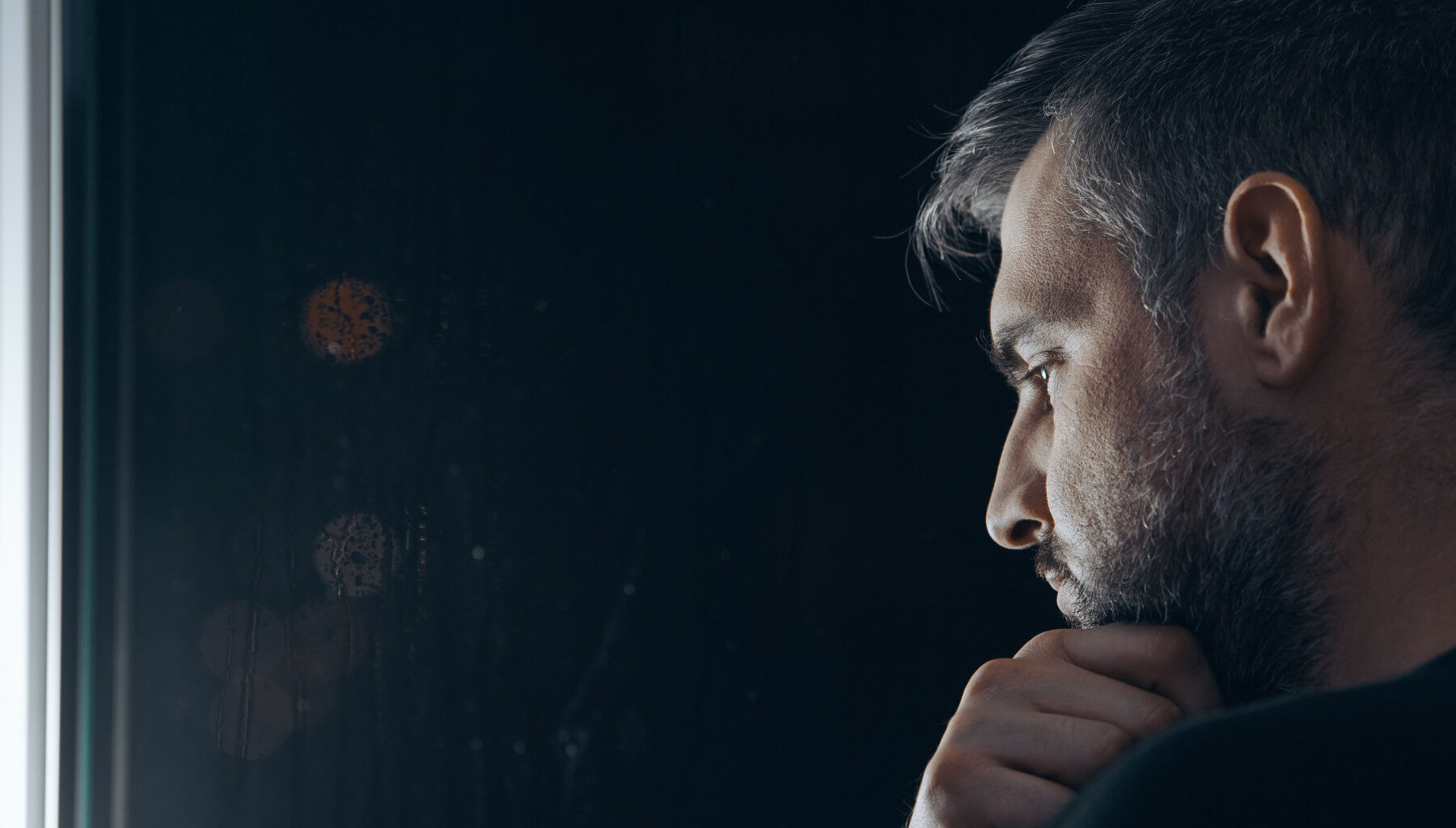woman sitting in dark
If you’ve been feeling a little off and not yourself lately, you’re not alone. You might be experiencing seasonal affective disorder (SAD). To make matters worse, we turn the clocks back Sunday, November 2, as part of daylight saving time, which means it’s going to get darker one hour earlier.
“Seasonal affective disorder is also known as seasonal depression. It’s a form of depression that occurs during different seasons,” says Erin Wojewodzki, APRN, a nurse practitioner with OSF HealthCare. “There’s winter onset seasonal affective disorder, which typically begins during the fall months. And then there’s a summer depression, where symptoms develop during spring and summer.”
In the United States, approximately 5% of adults experience SAD. It’s typically diagnosed between the ages of 18 to 30, and it’s more common in women. People with a family history of mental health challenges or depression are more likely to experience SAD. And so do people who live in areas farther away from the equator and experience more cloudier days including Alaska, Vermont and New Hampshire.
There are a range of symptoms that come with SAD, from feeling a little anxious to much more serious issues that could require medical attention.
“The symptoms of the winter onset SAD include symptoms such as depression, feelings of guilt, and a lack of desire to do those things that you typically love doing,” says Wojewodzki. “There’s a carbohydrate craving, it can impact sleep, and there can be feelings of suicidal ideation or thoughts.”
Experts aren’t sure what causes SAD. Most theories revolve around a lack of sunlight and sun exposure.
“We have this biological clock within us that’s used to so much sunlight in the wintertime – that changes,” says Wojewodzki. “It gets darker earlier, and that can impact our mood, our sleep, our hormones, and lead to some of these symptoms.”
Another issue is vitamin D deficiency. Sunlight helps boost vitamin D, which helps improve serotonin levels. Serotonin is the hormone in charge of boosting mood. Low levels of serotonin can lead to depression.
Finally, melatonin is another hormone that impacts our sleep. When you lack sunlight it can affect your melatonin, which makes us sleepier and groggier, which is easy to do when it turns dark by late afternoon.
Talk to your health care provider
There is no blood test or scan to diagnose SAD. Instead, your health care provider will discuss family history, review symptoms and may make a referral to a psychologist. Health care providers also use a patient questionnaire called PHQ-9, a tool that assesses degrees of depression.
“We look at things like, are you having symptoms of depression?” says Wojewodzki. “Are those symptoms of depression occurring during a specific time of the year, every year, and have those symptoms occurred two or more times during a specific season where you’ve experienced these feelings?”
A treatment plan is tailored specifically for each patient. Wojewodzki says that plan might include light therapy that can boost serotonin. Getting outside as often as possible can help. Your provider may recommend taking Vitamin D supplements or prescribe antidepressant medications until spring arrives. Medication called selective serotonin reuptake inhibitors (SSRIs) can improve mood by managing serotonin levels in your body. Finally, spend time with people you enjoy, which can boost your mood.
Dealing with changes that winter brings can be tough on anyone, especially those who suffer from SAD. But by sticking to your treatment plan, caring for yourself and planning ahead, Wojewodzki says malaise feelings can be overcome.
“If you are feeling symptoms of depression, isolation, sleep issues, gaining weight, not yourself, and especially feeling like harming yourself, I want you to reach out to your health care provider,” she says. “We can discuss different options to you, whether that’s medication or non-medication options to help you through this hard time.”
For more information on SAD or other behavioral health issues, visit the OSF HealthCare website.
‘;


